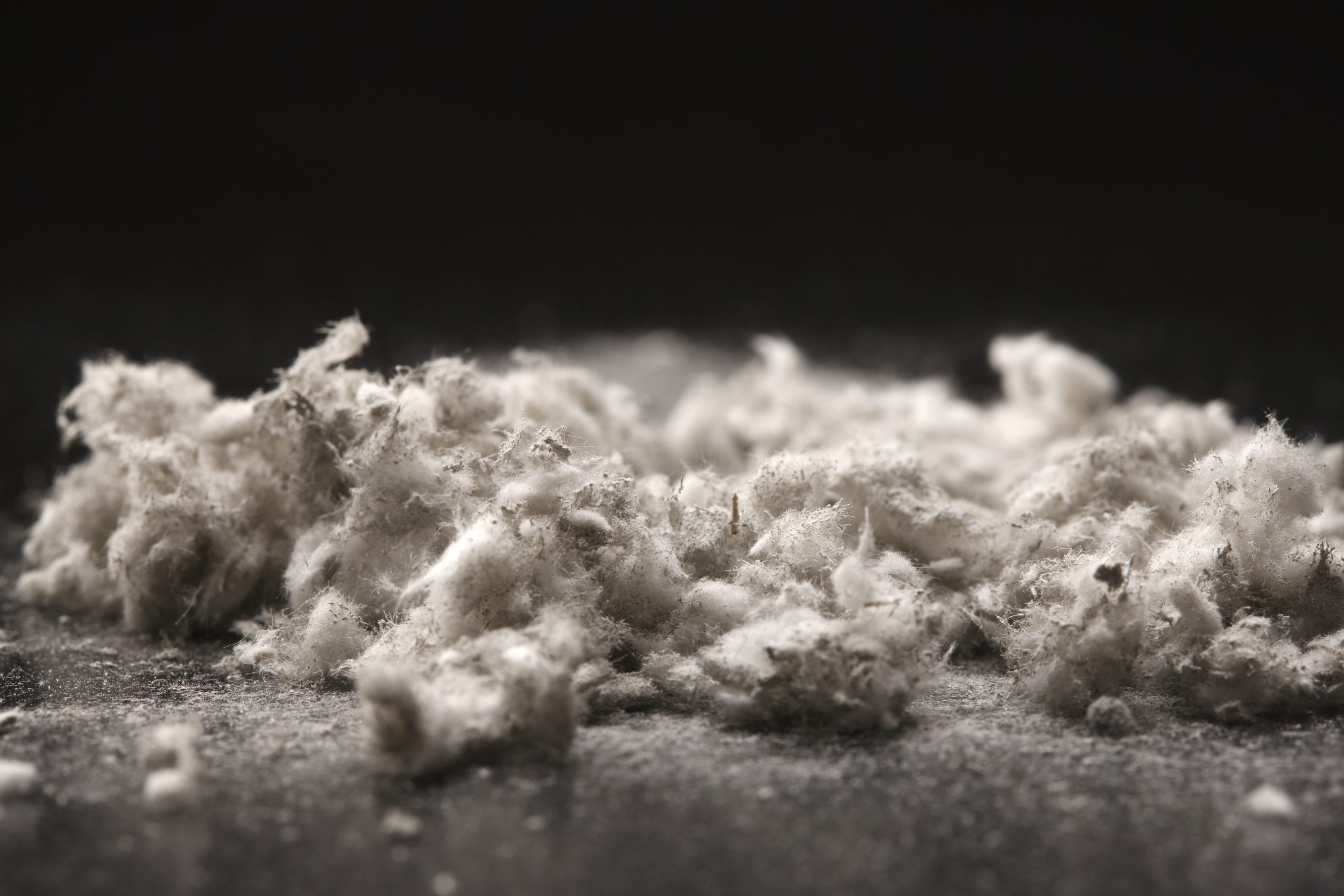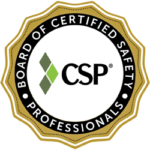The production of most asbestos has been illegal in the United States for over 40 years, and it continues to linger to this day, especially in buildings constructed prior to the 1980s (although there is no official cutoff date for all asbestos in buildings). Common asbestos-containing building materials (ACBMs) found in older buildings include flooring and other finishes, insulation material, fireproofing, roofing products, wall and ceiling materials, and adhesives. Asbestos is a carcinogen and exposure is extremely dangerous.

RPF Environmental offers asbestos testing before asbestos abatement projects to identify ACBMs and after to ensure that the area is safe to reoccupy. We can also help you find a reliable asbestos abatement company nationwide. Contact us now!
What is Asbestos Abatement?
The process of removing or mitigating the effects caused by this mineral is called asbestos abatement, but the first step is an inspection of the suspect material for the presence of asbestos and determining the level of hazard associated. (See our blog What to Expect During Asbestos Inspection for more details.) Asbestos abatement does not always necessitate removal, because when asbestos is undisturbed and intact, it can often be kept in place with minimal risk of exposure. If there is enough risk present or the ACBM will be impacted by renovation or demolition, a workplan to safely abate the substance needs to be prepared before removing or otherwise handling this toxic substance.
Who Should Perform Asbestos Abatement Projects?
It’s crucial to employ experienced professionals to avoid harm to workers or anyone occupying the building.
If you suspect an ACBM on your property, first contact an industrial hygiene firm to provide a licensed inspector to test the suspect material. They will inform you if there is asbestos present in the building by providing a written evaluation detailing where the mineral was found, the extent of its presence, and recommendations for mitigation. Your industrial hygiene firm should be independent of the abatement contractor to avoid the “fox watching the henhouse” situation. If it is determined that ACBM is present and remediation is needed, the industrial hygiene firm will prepare an abatement work plan to be used to solicit bids from qualified asbestos abatement contractors.
To learn more about RPF Environmental and asbestos abatement, contact us today at 603-942-5432.
Finding an experienced asbestos abatement contractor is important; they must be certified and familiar with the local, state, and federal laws of abatement. The contractor should be licensed by the state in which they are working.
Asbestos Abatement Procedure
The process of asbestos abatement includes:
- Knowing the plan: your abatement contractor will be following the plan set out by the industrial hygienist. It should provide details on how the area will be treated, including the preparation and cleanup process. The work plan should detail all local, state, and federal laws the abatement contractor must abide by during asbestos abatement.
- Proper demarcation: Once the plan is in place, your contractors must clearly mark the hazardous area and inform all building occupants to leave the area until completion and clearance testing is performed.
- Identifying ACBMs: Before the removal process, all ACBMs will be located through asbestos testing to help in identifying potential hazards and creating an effective removal abatement plan.
- Setting up a regulated work area: Air ducts should be sealed, the HVAC system must be disabled, and any areas not being treated should be securely sealed off with thick plastic sheets along with air pressure differential and filtration. The industrial hygiene firm should inspect the work area preparation prior to the abatement contractor starting actual asbestos removal or repair work.
- Removing material: The abatement contractor will utilize hand tools and wet methods to remove or repair the ACBM. During the process, the contractors will wear protective clothing and respirators to protect themselves. The ACBM will be placed into waste disposal bags, sealed, and removed through a decontamination unit designed with a protective lining. They will also establish a decontamination chamber, adjacent to the work area containment, with a shower to be used for exiting the work area.
- High-efficiency particulate air (HEPA) vacuuming: Special vacuums with HEPA filtration intended for asbestos removal work will be used to minimize dispersing of asbestos fibers during the work and for cleaning of surfaces.
- Final cleaning: After all ACBM in the work area has been removed (or repaired depending on the project) and all work area surfaces have been fully cleaned with wet methods and HEPA vacuuming, the industrial hygiene firm should perform their independent inspection and also conduct clearance air sampling pursuant to state and federal requirements. The work area barriers and air filtration should not be removed until the clearance testing is complete, and the work area meets the clearance criteria set forth in the abatement work plan.
- Post-cleanup: After the clearance criteria is met, the abatement contractor should remove the work area containment barriers and reclean the work area using HEPA vacuuming once again. Upon final completion, you should receive a report from your abatement contractor containing waste shipment records, permits, site logs, and copies of all licensing. You should also receive a report from your industrial hygiene firm including copies of inspection results and laboratory analysis. These records must be kept for compliance with environmental regulations.
Other Things to Know About Asbestos Abatement
When Should You Perform Asbestos Abatement?
Below are some situations that might need professional asbestos removal:
- When the materials are suspected to have been damaged by a recent natural or manmade disaster
- When you are planning to renovate or remodel your home along with other activities involving the disturbance of the suspected materials including repairs
- Before the demolition of buildings built before the 1980s
- If suspected materials are showing signs of damage
How Long Does Asbestos Abatement Take?
Asbestos abatement can be completed within a day. But, the testing process before and after removal can take longer.
Where Can You Find Asbestos-Containing Building Materials?
- Piping and duct insulation
- Popcorn ceiling
- Vinyl floor tiles
- Roofing and siding shingles
- Plaster Walls
- Drywall
- Vermiculite insulation
Tips for Finding a Reliable Asbestos Abatement Company
- Make sure that they are licensed to do asbestos abatement
- Ensure that they meet local and federal regulations
- Ask how they are going to remove, clean, and dispose of asbestos materials
- Ask about their services (some only offer asbestos abatement while others offer demolition services that include abatement)
FAQs
Not all old houses contain asbestos. But if your house was built before the 1980s, it has a higher chance of containing asbestos materials like flooring, walls, roofing, siding, insulation, and others.
The OSHA asbestos standard requires employers to provide personal exposure monitoring, proper training, and protective gear to employees to reduce asbestos hazards and exposure. But if you have been exposed, you can file a complaint with OSHA or contact an asbestos lawyer to go over your rights.
The process of sealing off asbestos materials is called encapsulation where the material is treated with a sealant to prevent toxic fibers from becoming airborne.
“There is no “safe” level of asbestos exposure for any type of asbestos fiber.” – OSHA
Since no amount of asbestos exposure is safe, any exposure amount can cause mesothelioma. Repeated and prolonged exposure can increase your risk of developing the disease.
Conclusion
Asbestos in old homes is a common problem that needs to be dealt with immediately especially if the materials are damaged or are starting to deteriorate. Hiring a professional asbestos abatement company is important to avoid exposing yourself to toxic asbestos fibers. You also need to perform asbestos removal before any demolition or renovation project.
This is only a brief summary. To learn more about RPF Environmental and asbestos abatement, contact us online today or call us at 603-942-5432. We also offer asbestos testing and inspection in Maine, New Hampshire, Massachusetts, and beyond the US.
Related Reading:
- How to Safely Occupy a Commercial Building with Asbestos Present
- Have New Asbestos Products Really Been Eliminated?
- Asbestosis versus Silicosis
- Asbestos – How Many Samples are Right?
- Asbestos Cost: How Much Is Asbestos Testing and Removal?
- What Does Asbestos Smell Like? Can You Detect It Through Smell?
- How Long Does Asbestos Stay Airborne After It Has Been Disturbed?




